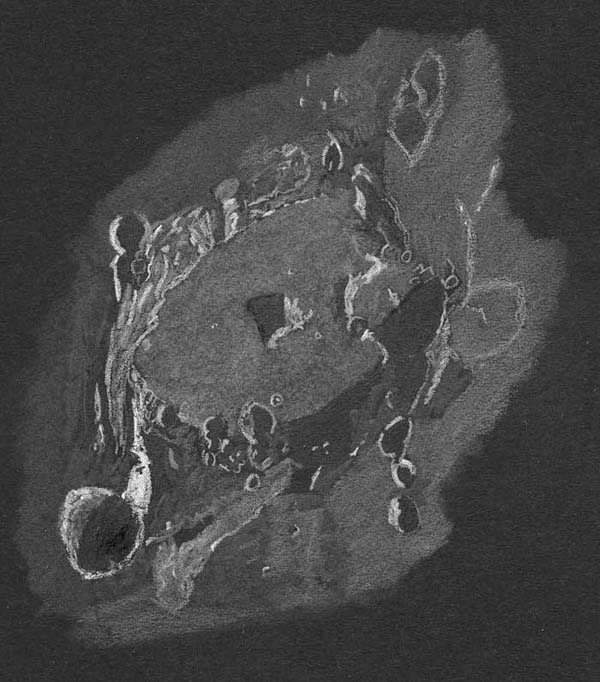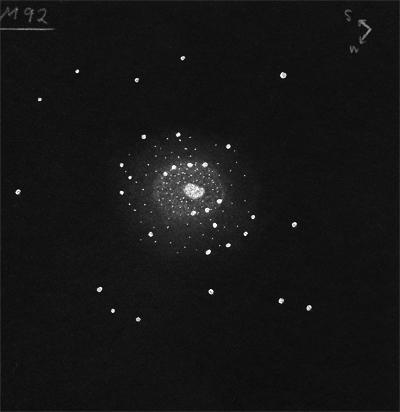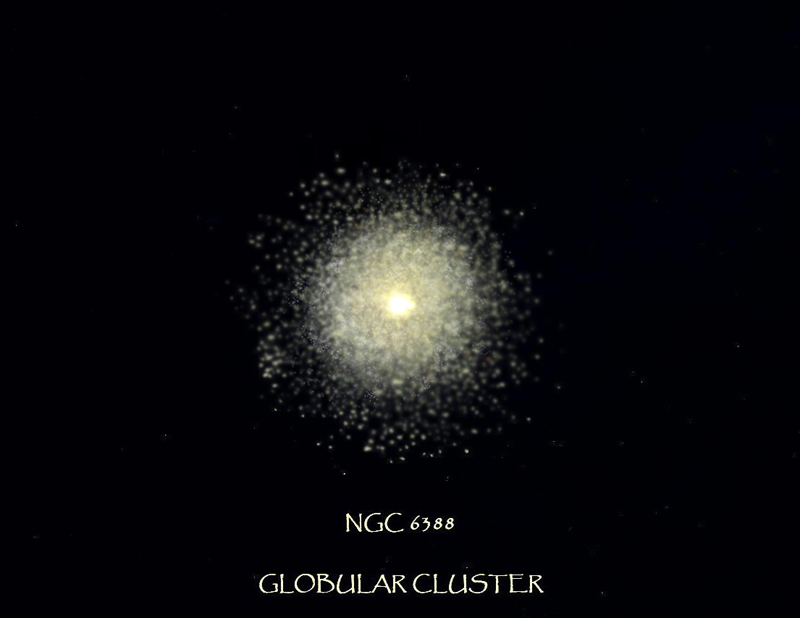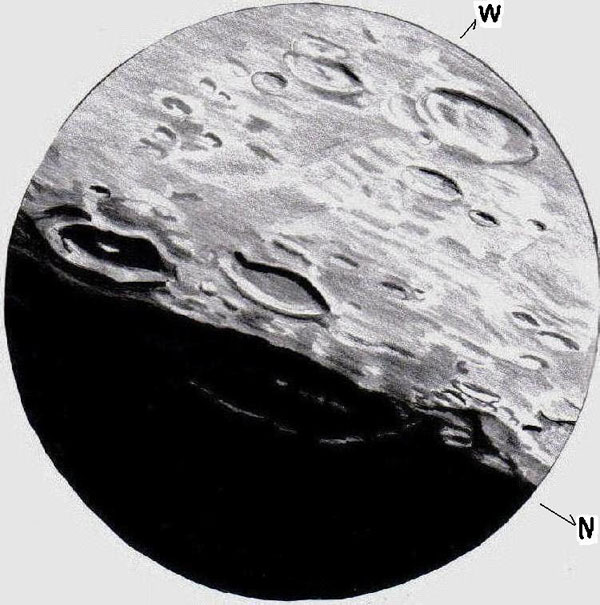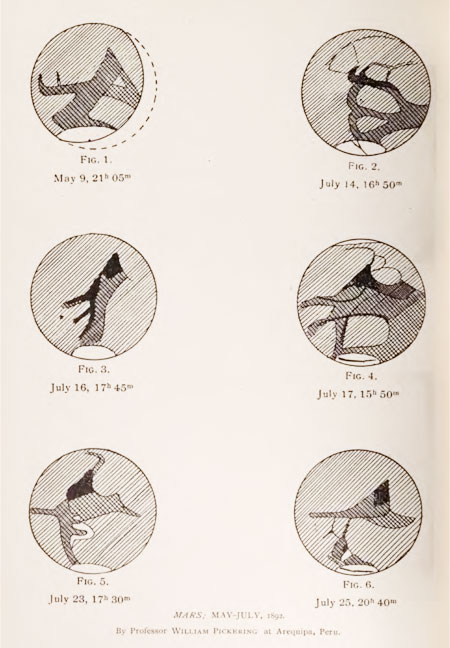
Mars: May – July, 1892
Sketch by Professor William Pickering
This series of Martian sketches was prepared by William Pickering in 1892. They were printed the article, “The Lowell Observatory, In Arizona,” by Edward S. Holden in The Publications of the Astronomical Society of the Pacific, Volume VI, 1894, pages 160-170 at Google Books. Mr. Holden’s article featured Pickerings drawings along with comparison drawings made at the Lick observatory during the same Martian apparition. Holden expressed considerable concern over the conclusions Pickering and Lowell published regarding their observations of Mars:
The very essence of the scientific habit of mind is conscientious caution; and this is especially necessary in referring to matters in which the whole intelligent world is interested—as the condition of the planet Mars, for example. I may take as an example the telegrams regarding Mars sent by cable from South America in 1892 by Professor WILLIAM PICKERING, who is to be the chief observer at the Lowell Observatory in Arizona. I quote two out of many such telegrams:NEW YORK, October 6, 1892. – The Herald correspondent at Valparaiso cables as follows: Professor PICKERING of the Harvard Branch Observatory at Arequipa says that he discovered forty small lakes in Mars.How does he know the dark markings are lakes? Why does he not simply call them dark spots? And is he sure there are forty?
NEW YORK, September 2, 1892. – Professor PICKERING of Harvard College sends the following to the Herald from Arequipa, Peru:
‘Mars has two mountain ranges near the south pole. Melted snow has collected between them before flowing northward. In the equatorial mountain range, to the north of the gray regions, snow fell on the two summits on August 5 and melted on August 7. I have seen eleven lakes near Solis Lacus varying in area from 80 by 100 miles to 40 by 40 miles. Branching dark lines connect them with two dark areas like seas, but not blue. There has been much trouble, since snow melted, in the Arean clouds. These clouds are not white, but yellowish and partly transparent. They now seem to be breaking up, but they hang densely on the south side of the mountain range. The northern green spot has been photographed. Many of SCHIAPARELLI’S canals have been seen single.”*
*Several of these canals were seen not only single but double at Mount Hamilton, do not know that they were so seen in Peru.
How is it known that there are two polar mountain ranges? How does he know that the flow will be northwards? And an equatorial range? Are not the gray regions so extensive that the description is, to say the least, indefinite? What is the evidence of “trouble” in the clouds? Is it certain that no clouds on Mars are white? How about the clouds “twenty miles high” reported by Professor PICKERING? Were they not white?
These and similar telegrams from South America regarding the happenings on Mars in the year 1892 were received by the astronomers at the LICK Observatory with a kind of amazement.







